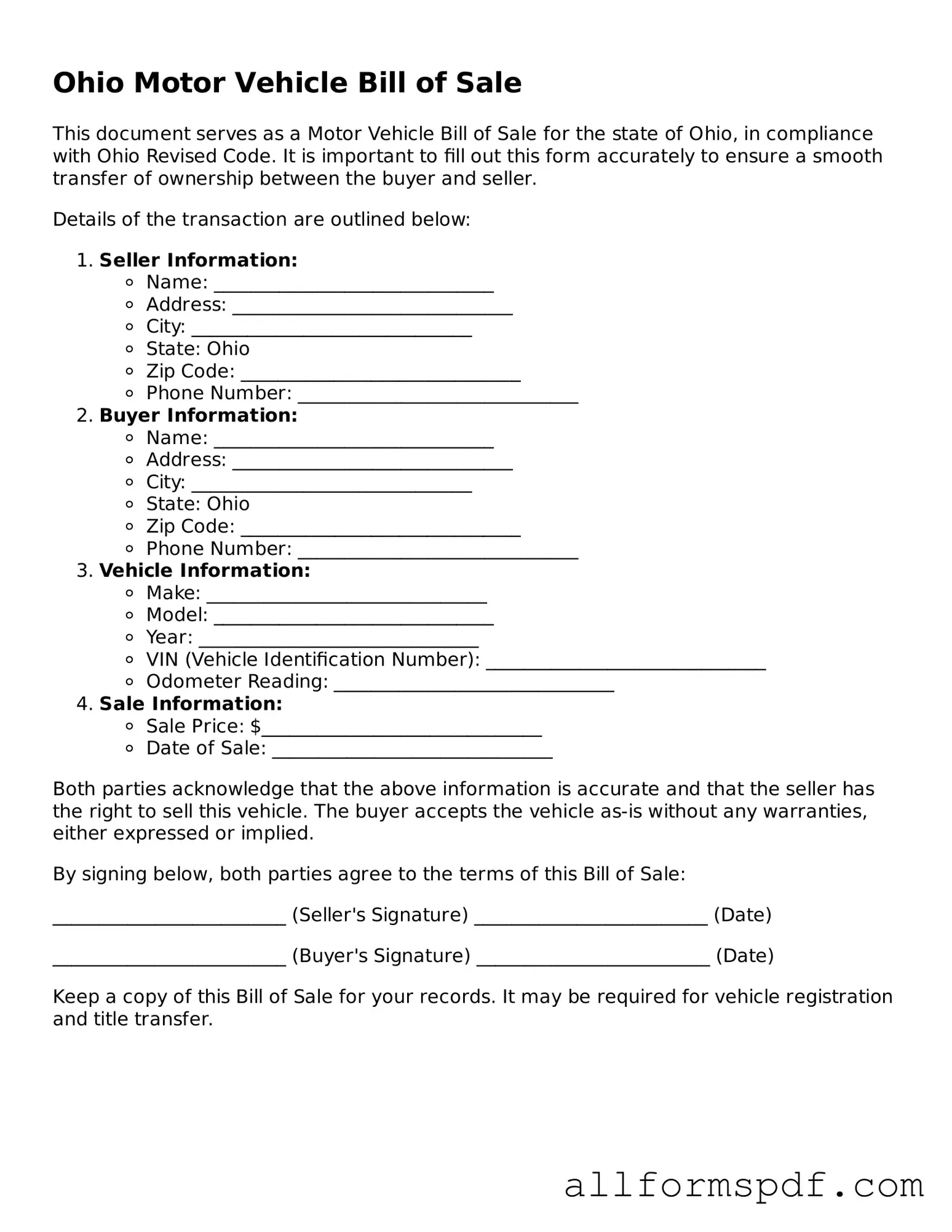When filling out the Ohio Motor Vehicle Bill of Sale form, accuracy is crucial. One common mistake is failing to include the correct vehicle identification number (VIN). The VIN is unique to each vehicle and serves as its fingerprint. Omitting or miswriting this number can lead to confusion and potential legal issues down the line.
Another frequent error involves incorrect odometer readings. Sellers must accurately report the mileage at the time of sale. An incorrect reading can raise suspicions of fraud and may result in penalties. Always double-check the odometer before completing the form.
People often forget to date the form. A missing date can complicate the transfer of ownership. It is essential to indicate when the sale took place to establish a clear timeline for both parties involved.
Not including the seller's and buyer's full names and addresses is another mistake. This information is necessary for proper identification and can prevent disputes. Ensure that both parties’ details are clearly stated and accurate.
Another common oversight is neglecting to sign the document. Both the seller and the buyer must sign the Bill of Sale for it to be valid. Without signatures, the form lacks legal standing, which can create problems later on.
Some individuals fail to provide a complete description of the vehicle. This includes the make, model, year, and color. A vague description can lead to misunderstandings about the vehicle being sold. Providing detailed information helps clarify the transaction.
People sometimes overlook the importance of including the purchase price. This figure is crucial for tax purposes and for establishing the value of the transaction. Be sure to write down the agreed-upon price clearly.
Another mistake is not keeping a copy of the completed Bill of Sale. Both the buyer and seller should retain a copy for their records. This document serves as proof of the transaction and can be important for future reference.
Some sellers may not understand the implications of selling a vehicle "as-is." If this is the case, it should be clearly stated on the form. Failing to do so can lead to misunderstandings about warranties or guarantees.
Lastly, individuals may not be aware of additional state requirements. Ohio may have specific regulations that need to be followed when transferring ownership. It’s essential to research and comply with all relevant laws to ensure a smooth transaction.
